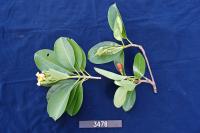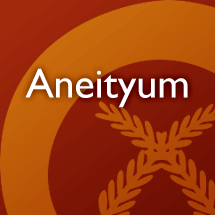Entry # 2789 has returned 1 entry
nop̃ou

listen
n. large epiphyte on dead tree, growing in open forest. (collection: Gregory M. Plunkett #3478)
Example: The wood of this plant is very hard and can be used for house posts. Because the wood is somewhat heavy, younger stems can be sharpened at one end and the pole can be used to plant dryland taro, to make holes for the tubers. For planting swamp taro, the leaves can be used to line the pit that the taro is planted in; it is a local fertilizer for the taro, and as it rots the soil becomes soft while the taro is growing. The flowers are placed behind one’s ear to enjoy the fragrance or can also be used to make a floral necklace (Intañ).
bookmark


